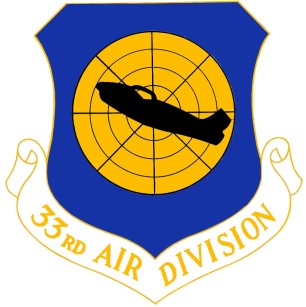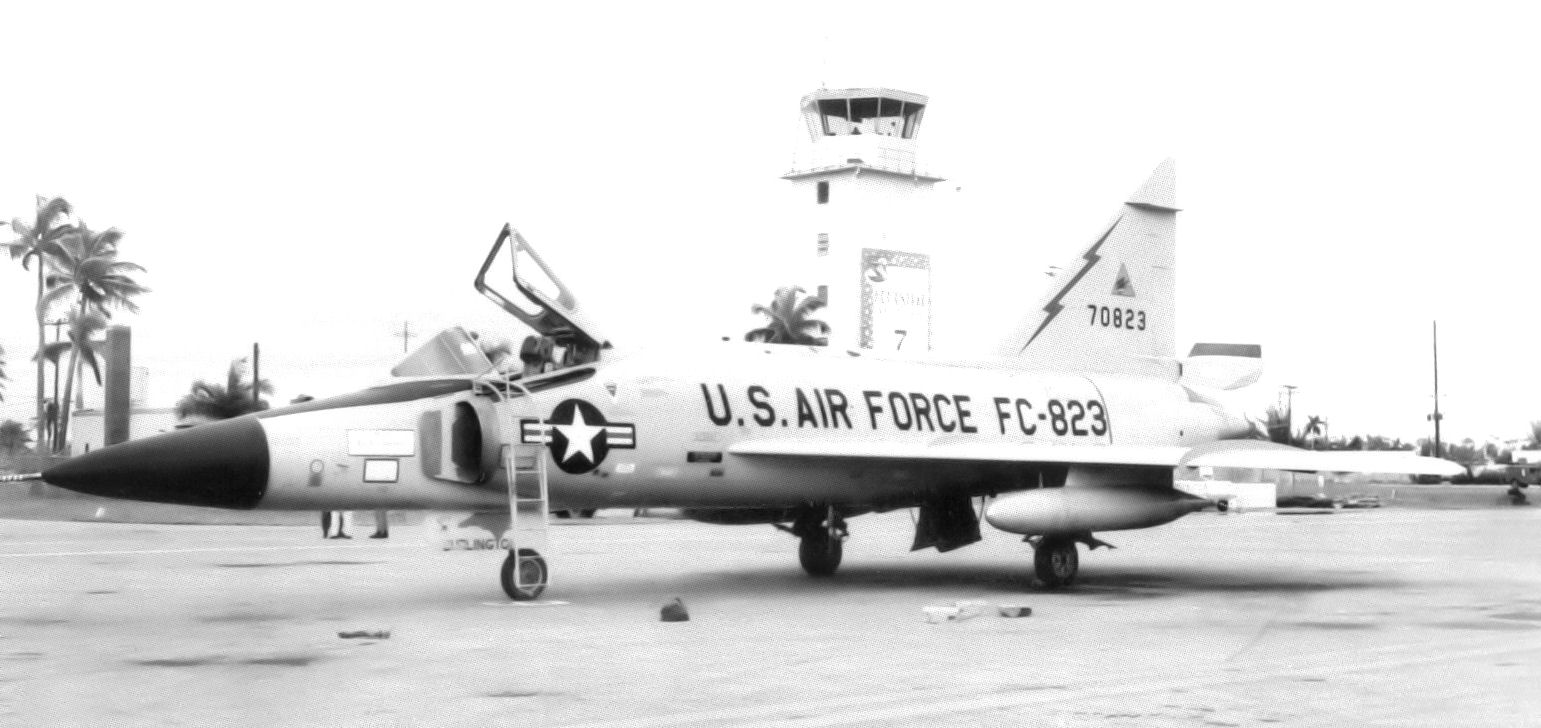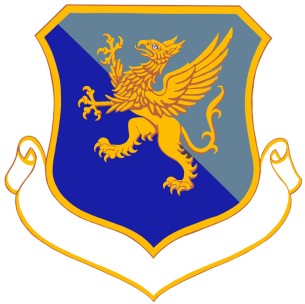|
792d Aircraft Control And Warning Squadron
North Charleston Air Force Station (ADC ID: M-113 NORAD ID: Z-113) is a closed United States Air Force General Surveillance Radar station. It is located in the City of North Charleston, South Carolina. It was closed in 1980. History North Charleston AFS was established in 1954 by Air Defense Command as one of a planned deployment of forty-four Mobile radar stations to support the permanent ADC Radar network in the United States sited around the perimeter of the country. This deployment was projected to be operational by mid-1952. Funding, constant site changes, construction, and equipment delivery delayed deployment. This site became operational on 1 June 1955 when the 792d Aircraft Control and Warning Squadron activated an AN/MPS-7 radar at the site, designated M-113. Logistical support for the radar site was provided by the adjacent MATS Charleston AFB, and initially the station functioned as a Ground-Control Intercept (GCI) and warning station. As a GCI station, the ... [...More Info...] [...Related Items...] OR: [Wikipedia] [Google] [Baidu] |
Air Defense Command
Aerospace Defense Command was a major command of the United States Air Force, responsible for continental air defense. It was activated in 1968 and disbanded in 1980. Its predecessor, Air Defense Command, was established in 1946, briefly inactivated in 1950, reactivated in 1951, and then redesignated ''Aerospace'' rather than ''Air'' in 1968. Its mission was to provide air defense of the Continental United States (CONUS). It directly controlled all active measures, and was tasked to coordinate all passive means of air defense. Air defense during World War II Continental United States air defense forces during World War II were initially under the command of the four air districts – Northeast Air District, Northwest Air District, Southeast Air District, and Southwest Air District. The air districts were established on 16 January 1941, before the Pearl Harbor attack. The four air districts also handled USAAF combat training with the Army Ground Forces and "organization a ... [...More Info...] [...Related Items...] OR: [Wikipedia] [Google] [Baidu] |
Tactical Air Command
Tactical Air Command (TAC) is an inactive United States Air Force organization. It was a Major Command of the United States Air Force, established on 21 March 1946 and headquartered at Langley Air Force Base, Virginia. It was inactivated on 1 June 1992 and its personnel and equipment absorbed by Air Combat Command (ACC). Tactical Air Command was established to provide a balance between strategic, air defense, and tactical forces of the post–World War II U.S. Army Air Forces followed by, in 1947, the U.S. Air Force. In 1948, the Continental Air Command assumed control over air defense, tactical air, and air reserve forces. After two years in a subordinate role, Tactical Air Command (TAC) was established as a major command. In 1992, after assessing the mission of TAC and to accommodate a decision made regarding Strategic Air Command (SAC), Headquarters United States Air Force inactivated TAC and incorporated its resources into the newly created Air Combat Command. History ... [...More Info...] [...Related Items...] OR: [Wikipedia] [Google] [Baidu] |
List Of USAF Aerospace Defense Command General Surveillance Radar Stations
United States general surveillance radar stations include Army and USAF stations of various US air defense networks (in reverse chronological order): *Joint Surveillance System (JSS), with radar stations controlled by joint FAA/USAF ROCCs beginning in 1980 * SAGE radar stations, for the Semi-Automatic Ground Environment network prior to the JSS (the 1st SAGE squadrons were designated in 1958) *Alaska Ring radar net, the radar stations of Alaskan Air Command * Permanent System radar stations, the Air Defense Command manual network of radar stations prior to deployment of SAGE * Lashup Radar Network radar stations, the radar stations deployed 1950-2 when the "Radar Fence" Plan was not approved * Temporary radar net, the "five-station radar net" established in 1948 * Army Radar Stations, World War II installations of the Aircraft Warning Service with radars ( cf. filter centers, Ground Observer Corps stations, etc.) By usage: *RBS Express sites, temporary stations for Radar Bomb Scor ... [...More Info...] [...Related Items...] OR: [Wikipedia] [Google] [Baidu] |
20th Air Division
The 20th Air Division is an inactive United States Air Force organization. Its last assignment was with Tactical Air Command at Tyndall Air Force Base, Florida where it was inactivated on 1 March 1983. During most of the division's history it served with Air Defense Command as a regional command and control headquarters. Between 1955 and 1967 the division controlled air defense units in the central United States. It controlled a slightly different areas of the midwestern US from 1955 to 1960 and again from 1966 to 1967. Its area of responsibility shifted to the east coast if the United States from 1969 to 1983. It was shifted to its final station on paper in 1983 and was immediately inactivated. History The 20th Air Division was assigned to Air Defense Command (ADC) for most of its existence. It served as a regional command and control headquarters, controlling fighter interceptor and radar units over several areas of responsibility during the Cold War. For three years ... [...More Info...] [...Related Items...] OR: [Wikipedia] [Google] [Baidu] |
33d Air Division
The 33rd Air Division (33d AD) is an inactive United States Air Force organization. Its last assignment was with Air Defense Command, assigned to First Air Force, being stationed at Fort Lee Air Force Station, Virginia. It was inactivated on 19 November 1969. History The 33d Air Division had air defense responsibility for an area encompassing Oklahoma, Arkansas, Texas, Louisiana, and parts of Kansas, Missouri, and Mississippi in March 1951. It was inactivated in June 1961. Activated again in 1966, replacing the Washington Air Defense Sector with its area changed to cover parts of North Carolina, South Carolina, and Virginia. Assumed additional designation of 33d NORAD Region after activation of the NORAD Combat Operations Center at the Cheyenne Mountain Complex, Colorado and reporting was transferred to NORAD from ADC at Ent Air Force Base in April 1966. The division supervised, administered, and trained its assigned units and, in doing so, participated in numerous live a ... [...More Info...] [...Related Items...] OR: [Wikipedia] [Google] [Baidu] |
Washington Air Defense Sector
The Washington Air Defense Sector (WaADS) is an inactive United States Air Force organization. Its last assignment was with the Air Defense Command (ADC) 26th Air Division, being stationed at Fort Lee Air Force Station (AFS), Virginia. It was inactivated on 1 April 1966. History WaADS was established in December 1956 as the 4625th Air Defense Wing. It was not assigned any units until 1958 when it assumed control of former ADC Eastern Air Defense Force units primarily in Maryland, Delaware, and Virginia. Units of the 32d Air Division in North and South Carolina were transferred to WaADS in 1961 as the 26th Air Division area of responsibility expanded southward. The organization provided command and control over several aircraft, missile and radar squadrons. On 1 February 1959 the new Semi Automatic Ground Environment (SAGE) Direction Center (DC-04) became operational. DC-04 was equipped with dual AN/FSQ-7 Computers. The day-to-day operations of the command were to ... [...More Info...] [...Related Items...] OR: [Wikipedia] [Google] [Baidu] |
35th Air Division
The 35th Air Division (35th AD) is an inactive United States Air Force organization. Its last assignment was with Air Defense Command, assigned to First Air Force, at Hancock Field, New York. It was inactivated on 19 November 1969. History Assigned to Air Defense Command (ADC) for most of its existence, from July 1951 – November 1969, the 35th "equipped, administered, and trained its assigned and attached units and placed those forces in a maximum state of readiness for use in air defense. Initially, its area of responsibility included all or part of Tennessee, North Carolina, South Carolina, Georgia, Alabama, Florida, and Mississippi". "In 1966, the area changed to include most of New York, Vermont, New Hampshire, Massachusetts, and southern Maine when the division assumed the responsibilities of the inactivated Boston Air Defense Sector. " Assumed additional designation of 35th NORAD Region after activation of the NORAD Combat Operations Center at the Cheyenne Mountai ... [...More Info...] [...Related Items...] OR: [Wikipedia] [Google] [Baidu] |
32d Air Division
The 32d Air Division (32d AD) is an inactive United States Air Force organization. It was last active with Air Defense Command, assigned to First Air Force at Gunter Air Force Base, Alabama, where it was inactivated on 31 December 1969. The division was first activated by Continental Air Command in November 1949 at Stewart Air Force Base, New York. It controlled air defense units in the northeastern United States from Stewart, and later from Hancock Field, New York until being inactivated in August 1958. The division was activated again in November 1958 at Dobbins Air Force Base, Georgia to provide air defense of the southeastern United States, moving to Oklahoma City Air Force Station, Oklahoma in 1961. During the Cuban Missile Crisis, it was the primary air defense command for potential attacks from Cuba, acting through its Montgomery Air Defense Sector and a provisional organization at Key West Naval Air Station. The division was inactivated in September 1963. In Apr ... [...More Info...] [...Related Items...] OR: [Wikipedia] [Google] [Baidu] |
546th Aircraft Control And Warning Group
The 546th Aircraft Control and Warning Group is an inactive United States Air Force unit. It was assigned to the 33d Air Division, stationed at Tinker Air Force Base, Oklahoma. It was inactivated on June 4,1951. This command and control organization activated on March 19,1951 was responsible for the organization, manning, and equipping of new Aircraft Control and Warning (Radar) units. It was dissolved, with the units being assigned directly to the 33d AD. Components * 792d Aircraft Control and Warning Squadron : Tinker AFB, Oklahoma, 16 March-4 June 1951 * 793d Aircraft Control and Warning Squadron : Hutchinson AFS, Kansas, 1 May-4 June 1951 * 798th Aircraft Control and Warning Squadron Belleville Air Force Station is a closed United States Air Force General Surveillance Radar station. It is located southeast of Belleville, Illinois. It was closed in 1968. History Belleville AFS was one of twenty-eight stations built as pa ... : Belleville AFS, Illinois, 1 May-4 June ... [...More Info...] [...Related Items...] OR: [Wikipedia] [Google] [Baidu] |
Dobbins AFB
Dobbins Air Reserve Base or Dobbins ARB is a United States Air Force reserve air base located in Marietta, Georgia, a suburb about northwest of Atlanta. Originally known as Dobbins Air Force Base, it was named in honor of Captain Charles M. Dobbins, a World War II C-47 pilot who died near Sicily. The installation is the home station of the host wing, the 94th Airlift Wing (94 AW) of the Air Force Reserve Command (AFRC) and its fleet of C-130 Hercules aircraft, and is also the location of the headquarters for AFRC's Twenty-Second Air Force (22 AF). Dobbins ARB is also home to Army Aviation Service Facility #2 (AASF #2) of the Georgia Army National Guard and their fleet of UH-60 Blackhawks and UH-72 Lakota helicopters. Associated units to AASF #2 include 1st Battalion, 171st General Support Aviation Regiment; Company H, 171st Aviation Regiment; Company C, 2nd Battalion, 151st Aviation; and Detachment 1, Company C, 111th General Aviation Support Battalion, 111th Aviation Regi ... [...More Info...] [...Related Items...] OR: [Wikipedia] [Google] [Baidu] |
Ethan Allen AFB
Burlington International Airport is a joint-use civil-military airport serving Burlington, Vermont, the state of Vermont's largest municipality. It is owned by the City of Burlington and located in the neighboring city of South Burlington, three nautical miles (6 km) east of Burlington's central business district. About 40% of the airport's passengers come from Quebec. Federal Aviation Administration records show that the airport had 687,436 passenger boardings (enplanements) in calendar year 2019, up from 658,879 enplanements in 2018, an increase of 4.33%. This airport is included in the FAA's National Plan of Integrated Airport Systems for 2021–2025, which categorized it as a ''primary commercial service'' airport (more than 10,000 enplanements per year). It is by far the busiest airport in Vermont, with 100 times the traffic of the second-busiest, Rutland–Southern Vermont Regional Airport. Although Rutland–Southern Vermont Regional Airport also provides co ... [...More Info...] [...Related Items...] OR: [Wikipedia] [Google] [Baidu] |
Tinker AFB
Tinker Air Force Base is a major United States Air Force base, with tenant U.S. Navy and other Department of Defense missions, located in Oklahoma County, Oklahoma, surrounded by Del City, Oklahoma City, and Midwest City. The base, originally known as the Midwest Air Depot, is named in honor of Oklahoma native Major General Clarence L. Tinker, the first Native American major general.Crowder, James. " It is the largest air depot in the nationTINKER AIR FORCE BASE" ''Encyclopedia of Oklahoma History and Culture''. (accessed 18 August 2013)May, Jon D.," ''Encyclopedia of Oklahoma History and Culture''. (accessed 18 August 2013) Tinker is the headquarters of the Air Force Materiel Command's (AFMC) Oklahoma City Air Logistics Center (OC-ALC), which is the worldwide manager for a wide range of aircraft, engines, missiles, software and avionics and accessories components. The commander of Air Force Sustainment Center (AFSC) is Lieutenant General Tom D. Miller and the commander o ... [...More Info...] [...Related Items...] OR: [Wikipedia] [Google] [Baidu] |








